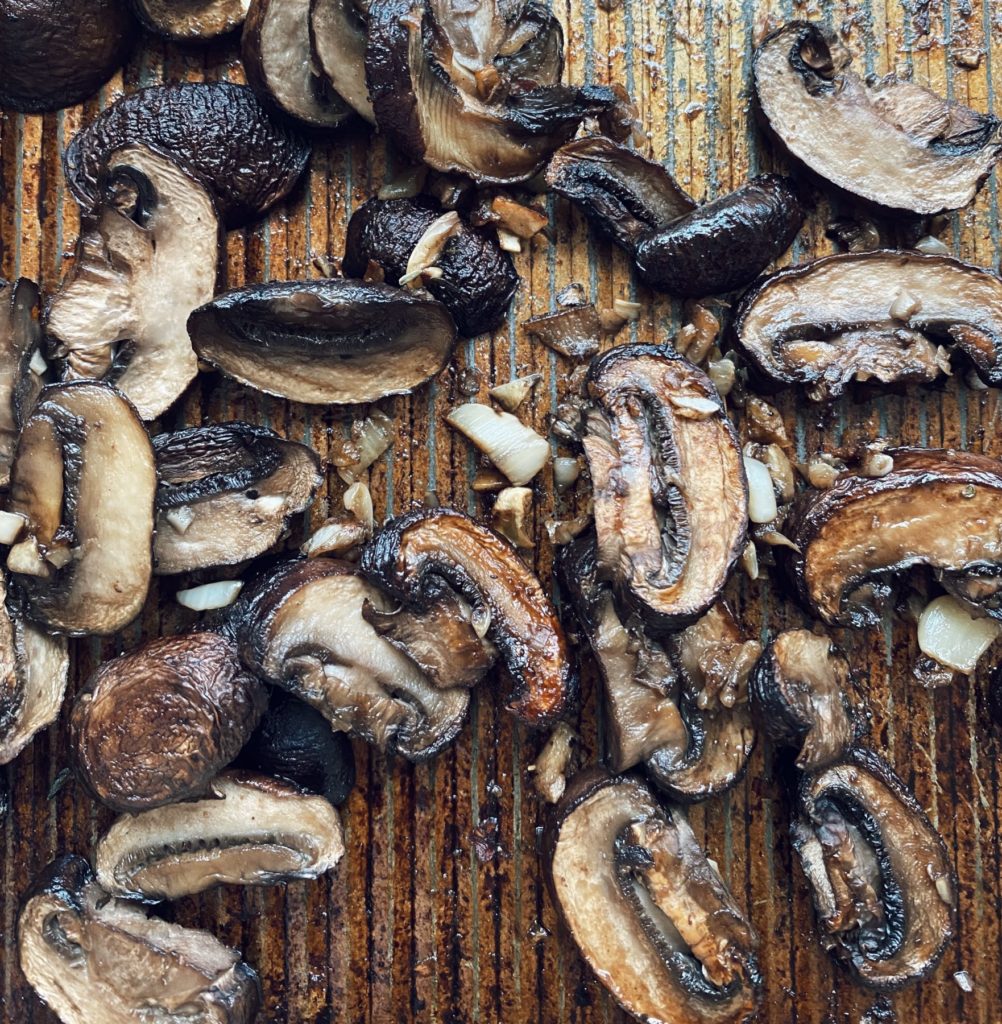Want to know a secret? Dietitians love the New Year. Not only do we get to support our clients and loved ones in turning resolutions into healthy habits. We also learn the top food trends for the upcoming year.
Food industry experts share insights each January about foods and wellness trends to watch for in restaurants and groceries, as well as on food blogs. Some of these data come from dining and purchasing habits in larger cities and in other countries. Cheese tea is one trend that’s made its way from China to larger U.S. cities. If you’re not familiar (and who could blame you?), cheese tea is brewed green or black tea with a layer of cream cheese on top. Time will tell if this trend will take off in St. Louis.
Other trends are more consumer-driven, and many are easy and fun to incorporate at home!
Food Trend #1: Mushrooms

Our top food trend for 2019 is mushrooms! Food industry experts and consumers are crazy for mushrooms right now. New York Times food columnist Kim Severson called mushrooms the “It” vegetable for 2019, while Pinterest called them 2019’s most trendy food. In fact, Pinterest searches for mushroom recipes are up 64%, compared to last year.
This is one trend we can absolutely get behind! Fresh cultivated mushrooms are nutritional powerhouses, because they’re rich in:
- potassium, which promotes heart health
- B vitamins, which boost energy
- Vitamin D, which is great for bone health! In fact, they’re the ONLY naturally occurring source of vitamin D in the produce aisle—
- Selenium and other antioxidants in mushrooms help reverse cellular damage and, as such, may ward off chronic and acute illness. Again, mushrooms are the leading source of selenium in the produce aisle.
Our favorite way to use fresh cultivated mushrooms is the Blend. The Blend is a mixture of ground meat (any variety!) and finely chopped, sautéed mushrooms. You can use it in any recipe that calls for ground meat—like burgers, meatloaf, and tacos. We love The Blend because it makes our favorite meat dishes more nutritious and environmentally sustainable without compromising flavor. It is also a great way to introduce mushrooms to people who THINK they don’t like them (although we truly think there’s a mushroom out there for everyone).
Not into ground meat? There are lots of other amazing ways to boost your ‘shroom intake. We love stuffing portobello caps with pizza toppings or seasoned grains. We’re also big fans of enoki or shiitake mushrooms in stir fries and noodle dishes.
Food Trend #2: Ugly Produce
Do you know the saying, “It’s what’s on the inside that counts?” This is true for people AND most produce.
We’ve been conditioned over the years to seek out shiny, perfect, display-worthy produce. Many apples, for example, have a harmless wax coating to enhance appearance. Unfortunately, a lot of great but “ugly” produce goes to waste because we expect perfection in our produce.
Feeding America found that about 6 billion pounds of produce is wasted in the orchard or in stores each year. Some of this is due to cosmetic “flaws.” In a survey conducted by the National Resources Defense Council, some farmers reported that up to half of certain crops go to waste because they weren’t marketable. They’re totally edible and probably delicious—they just don’t look pretty.
This trend is super easy to incorporate. Don’t be so quick to reject produce that’s misshapen or has small surface flaws. This is easy to do at farmers markets and orchards, but it’s also possible at supermarkets. My kids love when I buy funny looking produce, and I actually think they’re more likely to eat it! It can be a bit of a challenge, at times, to figure out how to slice misshapen veggies. But they get involved in the prep strategy, and involving kids in food prep can actually make them more likely to eat veggies that they wouldn’t otherwise (SCORE!).
Food Trend #3: Sea Vegetables
Any sushi lover knows that seaweed is not a new food trend, per se. But sea vegetables are having a moment right now. Markets and recipe developers are featuring a wider variety of sea vegetables—like wakame, algae, kelp, bonito, dulse, sea lettuce, spirulina, and chlorella. We’re also seeing a wider range of products that contain sea vegetables.
As is the case with our other trends, sea veggies healthy and sustainable. Most sea vegetables contribute micronutrients like iodine (great for the thyroid), copper, and magnesium to the diet, and many also contain fiber and protein! And can we talk about sea veggies from an environmental standpoint for just a sec? Sea veggies help clean the water and require very few resources to grow. This is why eco-conscious restaurants and food writers embrace the brine.
Look for a wide variety of dried sea vegetables in the Asian foods aisle of most groceries. My kids love seaweed snacks, which are thin, salty seaweed crisps. Kelp noodles are also popular and are a great base for stir fries. Look for chlorella and spirulina in bottled green juices, if you’re a juice drinker.
What about you, friends? What food trends are you excited to try in 2019?

